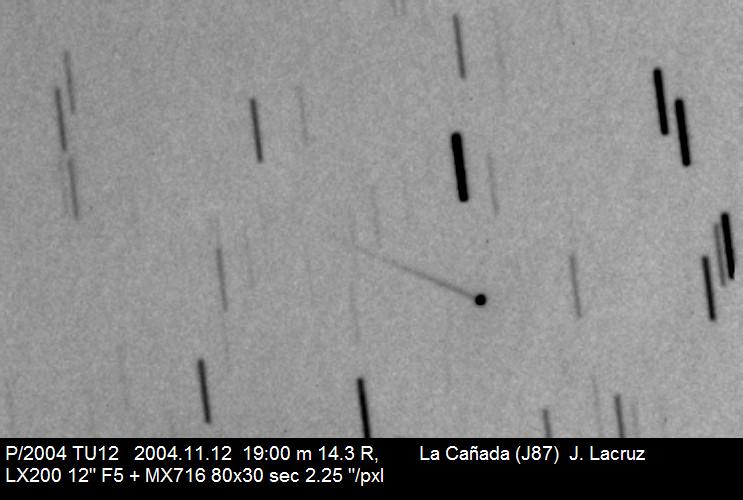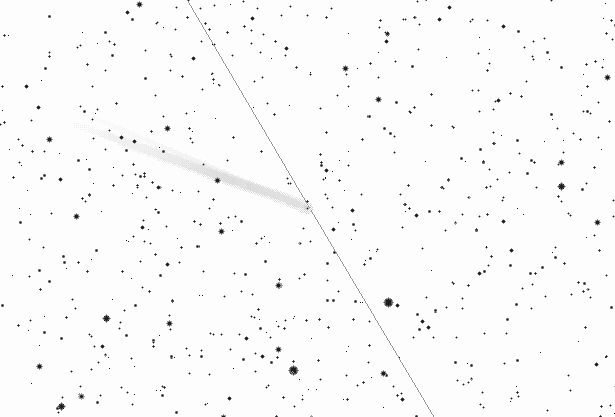Straight Tail of Comet 162P/2004 TU12
|
Japanese version Home page |
Updated on November 18, 2004 |
![]()
|
An asteroid 2004 TU12 was discovered on Oct. 10. Juan Lacruz detected the straight tail of this object towards p.a. 69 deg on Nov. 12, then it was changed to be a new comet 162P/2004 TU12 ( Siding Spring ). 
Image taken by Juan Lacruz. At my first glimpse of his image, the "tail" looks like a dust trail of this object. Similar "tail" was observed on 133P and C/2002 CE10, an unusual straight tail from a nucleus without any coma. All of them, C/2002 CE10, 133P and P/2004 TU12, had been considered as an asteroid before, then turned to be a comet due to the "tail". The "tail" of C/2002 CE10 was detected on Aug. 21 and 22 in 2003 towards p.a. 212 deg (IAUC 8193). I calculated and found that the apparent direction of normal tails and dust trail almost coincided by chance at that time. In addition, the earth had been passing accross the comet's orbital plane. So normal tails also looked straight by chance at that time. Therefore, it was unclear for me whether the "tail" of C/2002 CE10 was really a tail or dust trail, and whether the "tail" was spreading along the orbital plane or not. In the current case of P/2004 TU12, the directions of the normal tails was p.a. 69 deg, and the direction of the dust trails was p.a. 30 deg. Therefore, the "tail" of P/2004 TU12 was not the dust trail, but a normal tail. 
Position angles of P/2004 TU12's tails and dust trail on Nov. 12. Probably, the "tail" of C/2002 CE10 was also a normal tail. Well, I have never investigated about 133P. I have heard that such an unusual straight tail appeared due to an impact with another small object. But if so, I imagine many large particles will be exploded, which will be spreading along the orbit and structure the dust trail. But actually, the "tail" of P/2004 TU12 was along the normal tail direction, so the dust must be so tiny as ones in the normal dust tails. Probably it objects the scenario of impact. The angle between the view direction from Earth towards the comet, and the comet's orbital plane, was 18 deg at that time, not so small. So if the tail was spreading along the orbital plane, like a normal dust tail, it must have looked somewhat wide. Actually it was so straight. So the tail must be really a straight one line in the space. David Seargent commented that a suggestion was initially made that the tail of 133P/Elst-Pizarro might have been debris from an impact, but the study by Sekanina appeared to rule this out by showing that the particles were ejected over a (short) period of time, not all in a single burst. |
![]()